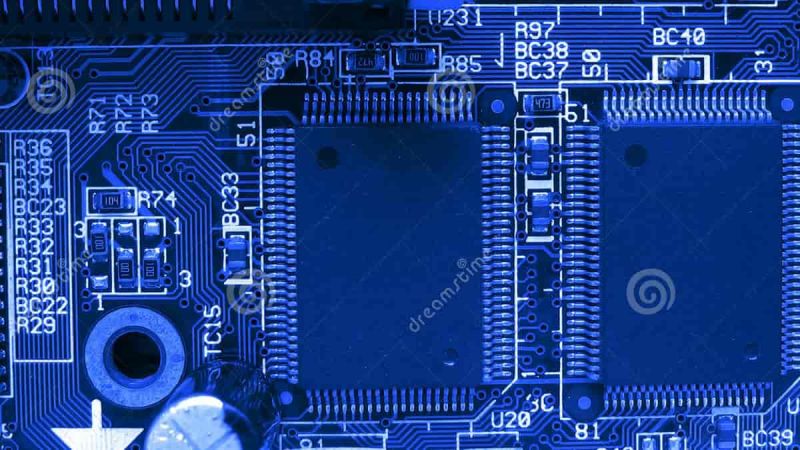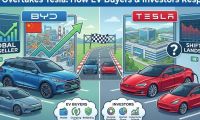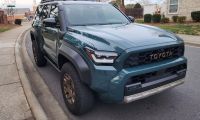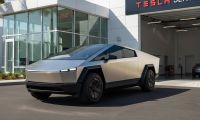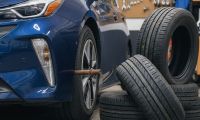Like other automakers, Ford continues to feel the pain of an enormous shortage of semiconductors and other chips. Indeed, a fire in a computer foundry plant in Japan has also contributed to the critical computer parts shortage. Yet, despite the shortages and other troubles, Ford will retain its position as the number one automaker in the U.S.
Ford, Others Feel Chip Shortage
Much of this problem can be traced back to the pandemic's early months when automakers like Ford and General Motors also feel the crunch, cut back, or shut down assembly lines because of the coronavirus. Automakers felt the coronavirus as auto workers stayed home for months at a time. This has been a time of continuing headaches for Ford's assembly lines which I discussed here.
The shutdown created a false impression among semiconductor foundry sites. (Foundry sites are where they make the photomasks that begin the chip-making process and ultimately lead to semiconductors.) Almost overnight, thanks to the assembly line shutdowns, the foundry sites believed they had a considerable amount of excess capacity thanks to what they perceived the auto industry's having all the semiconductors it needed.
Because of shuttered auto assembly lines, there was a perception for the semiconductor industry that there was excess capacity. Indeed, the quiet assembly lines of that period fueled this ongoing perception. It was a phony perception based on incomplete knowledge of the conditions within this auto industry. The industry's lines were quiet thanks to COVID-19. When an automaker isn't building vehicles, there is no need for semiconductors. The auto industry was the cause of the problem it faces now.
Because the auto industry had successfully developed a manufacturing paradigm that relied on just-in-time (JIT) delivery of critical parts like semiconductors, one had to figure that there would be shortages until the lines were thoroughly rung out and open again. Certainly, JIT delivery has been one way to maximize both deliveries and profits when the industry is open and flourishing (factories don't have to store parts in quantity, relying, instead, on shipments to arrive on schedule when they are needed). Perhaps it is time for the auto industry to order and store parts as other industries do. The auto industry used this older model of stocking parts needed until the 1990s when JIT became popular. You have to wonder how long JIT will remain popular now that it is suffering production shutdowns and slowdowns.
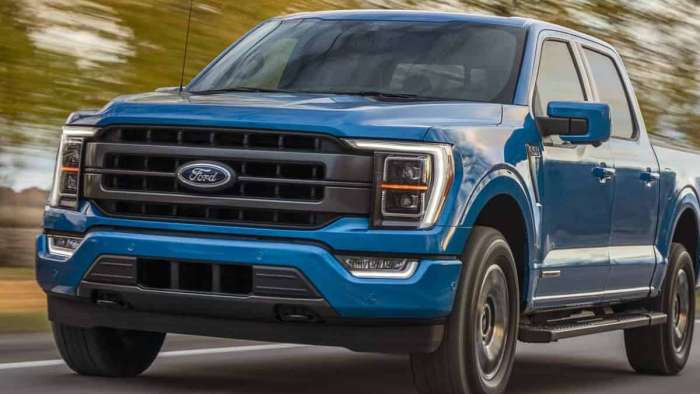
Some Reasons For The Chip Shortage
However, this time around, though, just-in-time deliveries that had worked like a charm in pre-COVID times fell. Instead, JIT created a false sense of capacity. The reason is that for months the JIT wasn't working or delivered. It seemed as if the auto industry had all the supply it needed, and the semiconductor manufacturers suddenly had all this extra capacity.
As a result, the foundry shops changed photomasks, tightening up on the spacing to 1-2 nm instead of the 280 that the auto industry relies on. The result has been, as noted, a bunch of empty. Other industries have filled up the space left by the auto industry.
For the auto industry, it has meant a supply chain that is pretty empty of needed semiconductors.
Ford also blamed part of the semiconductor shortfall on the major February blizzard that left much of the Southwest tied up in snowdrifts. Still, the industry can't get around the fact that JIT also had a significant impact. The industry, led by Ford, has only been operating at a high level for the last couple of months,
Ford Contines Building Trucks?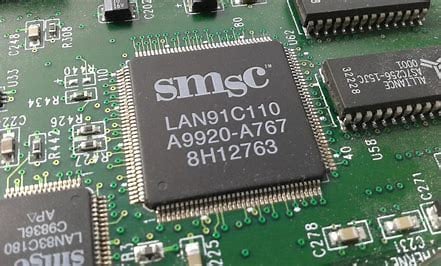
To keep its assembly lines and autoworkers busy – or busier than idle – the automaker has been fabricating as much of each model as it can. It is leaving out certain electronic modules that contain scarce semiconductors. As noted in a Torque News story last week, Ford will hold onto vehicles built with missing modules and ship them to dealers once the missing modules are available and once the automaker can complete comprehensive quality checks.
Ford has also handled the parts shortages by canceling shifts at the Louisville Assembly plant, which assembles Ford F-150s. Other vehicles that have felt the slowdown in semiconductors have been the Ford Escape and Lincoln Corsair.
Outside the U.S., Ford had scheduled downtime at its Cologne assembly plant. Fiesta production had been suspended for two weeks earlier this month.
As noted last week, these halts on production bring with them real consequences for the automaker. The costs tied to the shutdowns and slowdowns will significantly impact the bottom line if they extend through the first half of the year. The automaker estimated that the costs would be between $1 and $2.5 billion in the first half of the year. However, the automaker also noted that there could be cost recoveries and some production make-up in the second half of the year.
Marc Stern has been an automotive writer since 1971 when an otherwise normal news editor said, "You're our new car editor," and dumped about 27 pounds of auto stuff on my desk. I was in heaven as I have been a gearhead from my early days. As a teen, I spent the usual number of misspent hours hanging out at gas stations Shell and Texaco (a big thing in my youth) and working on cars. From there on, it was a straight line to my first column for the paper, "You Auto Know," an enterprise that I handled faithfully for 32 years. Not too many people know that I also handled computer documentation for a good part of my living while writing YAN. My best writing, though, was always in cars. My work has appeared in venues including Popular Mechanics, Mechanix Illustrated, AutoWeek, SuperStock, Trailer Life, Old Cars Weekly, Special Interest Autos, and others. You can follow me on: Twitter or Facebook.


